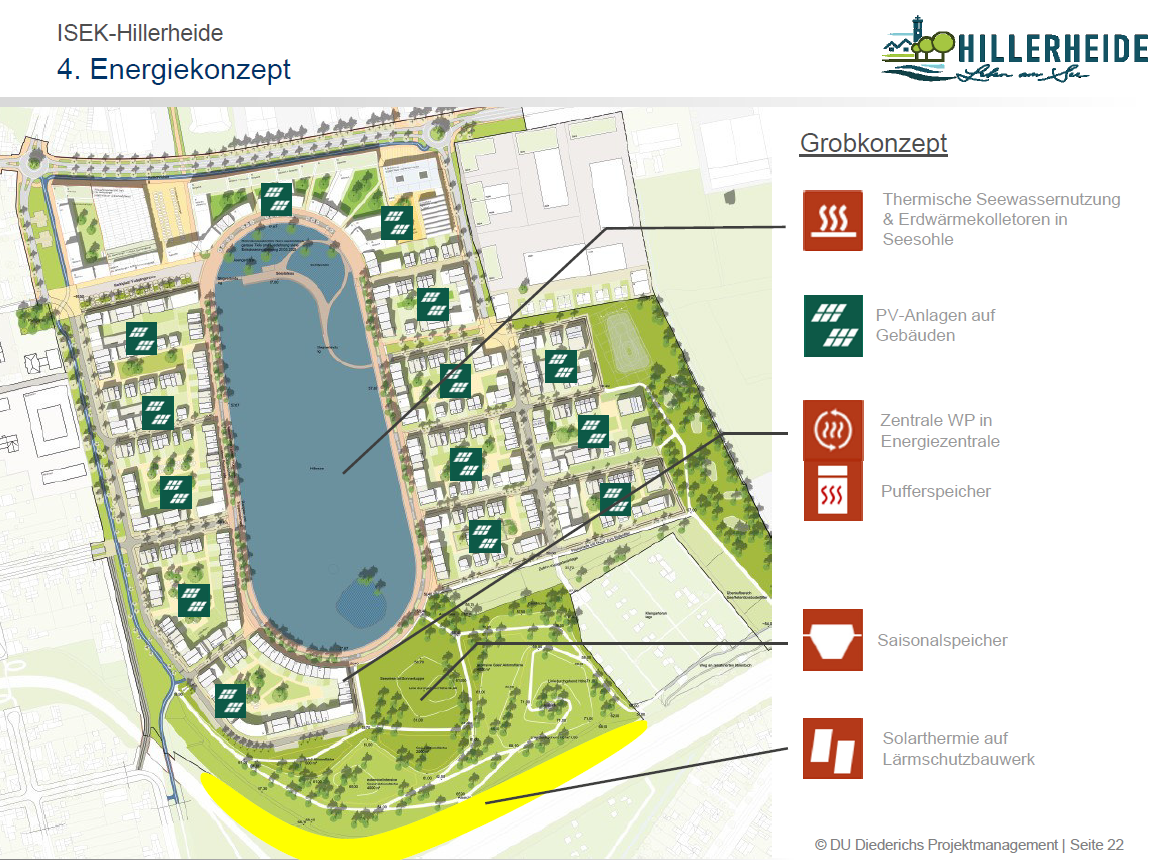The city of Recklinghausen, with a population of around 120,000, is located in the northern Ruhr region in the German state of North Rhine-Westphalia.
In 2013, the city commissioned an integrated district development concept for the existing Hillerheide neighborhood. The urban development focus is on the development of a former harness racing track with approximately 34 hectares as one of the last large conversion areas in the urban area.

Picture 1. © DU Diederichs Projektmanagement
A near-natural lake is to be created in the interior of the former racecourse.The water area is not only significant as a local recreation area and building block of a climate-adapted urban redevelopment (blue-green infrastructure dampens the formation of heat islands in cities). An initial rough concept for the energy supply of the new urban quarter envisages using lake water as an energy source for an innovative heat supply concept (so-called thermal lake water utilization). In particular, heat is to be extracted from the lake in the summer months by means of heat exchangers and stored seasonally.
In addition, a geothermal collector below the lake bed will feed the planned low-temperature network. In a further step, a central large-scale heat pump will bring the environmental heat from the lake as well as from the geothermal collectors to the temperature level required to supply heating and hot water for up to 1,000 newly created residential units.
A large solar thermal collector system on a noise barrier serves as a complementary heat source.
A seasonal heat storage facility to be housed in an "earth mound" at the edge of the lake completes the supply concept.
The energy requirements of the new urban neighborhood/ district will also be optimized, as the residential buildings are to be constructed to a building standard that is below the currently valid legal requirements in Germany. A KfW efficiency house standard of 40 would be conceivable, for example.
The overall concept also envisages that a significant proportion of the electricity to supply the new residential area and to operate the heat pump will come from roof-integrated photovoltaic systems. At the present time, another planning office is further elaborating the rough concept on the basis of a feasibility study. A political decision on the implementation of the envisaged energy solutions is still pending.








